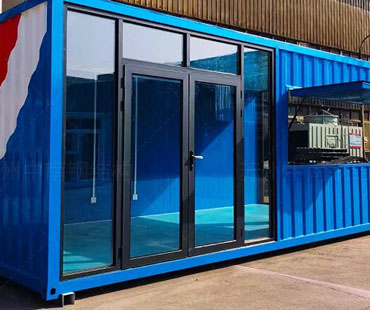Container transportation has revolutionized global trade by enabling efficient movement of goods across vast distances. However, this mode of transport is not without its challenges, particularly concerning safety. The complexities of container shipping, from loading and unloading to transportation and storage, introduce various risks that can lead to accidents, losses, and damage. This article explores the primary safety challenges faced in container transportation and discusses effective countermeasures to mitigate these risks.
1.Cargo Damage and Loss
One of the most significant challenges in container transportation is the risk of cargo damage or loss. Containers can be exposed to harsh environmental conditions, including extreme temperatures, humidity, and rough sea conditions. Additionally, improper loading and securing of cargo can lead to shifting during transit, resulting in damage.
Countermeasures:
-Proper Training: Ensuring that personnel involved in loading and securing cargo are adequately trained can significantly reduce the risk of damage. Training should include best practices for securing different types of cargo and understanding weight distribution.
-Use of Technology: Implementing technology such as cargo monitoring systems can help track the condition of goods in real-time, allowing for quick responses to any potential issues.
2.Theft and Vandalism
Containers are often targets for theft and vandalism, especially when left unattended in ports or during transit. High-value goods can be particularly susceptible, leading to significant financial losses.
Countermeasures:
-Enhanced Security Measures: Employing security personnel and surveillance systems in high-risk areas can deter theft. Additionally, using tamper-proof seals and locks on containers can enhance security during transit.
-Risk Assessment: Conducting risk assessments to identify vulnerable routes and ports can help shipping companies implement targeted security measures in those areas.
3.Accidents During Loading and Unloading
The loading and unloading process is critical and can be hazardous. Accidents can occur due to equipment failure, human error, or poor visibility, potentially leading to injuries or fatalities.
Countermeasures:
-Regular Equipment Maintenance: Ensuring that cranes, forklifts, and other equipment are regularly inspected and maintained can reduce the likelihood of accidents.
-Safety Protocols: Establishing clear safety protocols and ensuring all workers adhere to them can minimize risks. This includes the use of personal protective equipment (PPE) and maintaining clear communication among personnel.

4.Environmental Hazards
Container transportation can pose environmental risks, such as spills or leaks of hazardous materials. Containers carrying### Environmental Hazards
Container transportation can pose environmental risks, such as spills or leaks of hazardous materials. Containers carrying chemicals or other dangerous goods can lead to severe environmental consequences if not handled properly.
Countermeasures:
-Hazardous Materials Training: Providing specialized training for workers who handle hazardous materials is crucial. This training should cover proper handling, emergency response procedures, and the significance of Material Safety Data Sheets (MSDS).
-Regulatory Compliance: Adhering to international regulations, such as the International Maritime Dangerous Goods (IMDG) Code, ensures that hazardous materials are transported safely. Regular audits and compliance checks can help maintain standards.
5.Weather-Related Challenges
Adverse weather conditions, including storms, fog, and extreme temperatures, can severely impact container transportation. Weather-related disruptions can lead to delays, increased risks of accidents, and damage to cargo.
Countermeasures:
-Weather Monitoring Systems: Utilizing advanced weather forecasting tools can help shipping companies anticipate adverse conditions and adjust routes or schedules accordingly.
-Flexible Routing: Developing flexible routing strategies can enhance resilience against weather-related disruptions. This may involve rerouting ships or delaying departures until conditions improve.
6.Cybersecurity Threats
As the industry increasingly adopts digital technologies for logistics management, the risk of cyberattacks on shipping systems has grown. Cyber threats can lead to data breaches, operational disruptions, and financial losses.
Countermeasures:
-Robust Cybersecurity Protocols: Implementing strong cybersecurity measures, such as firewalls, encryption, and intrusion detection systems, is essential to protect sensitive information and operational systems.
-Employee Training: Regular training on cybersecurity best practices for all employees can help create a culture of security awareness and reduce the risk of successful cyberattacks.
7.Infrastructure Limitations
Many ports and transportation routes face infrastructure challenges, including congestion, outdated facilities, and limited capacity. These limitations can lead to delays and increased risks during loading and unloading processes.
Countermeasures:
-Investment in Infrastructure: Collaborating with government bodies and other stakeholders to invest in upgrading port facilities and improving transportation infrastructure can alleviate congestion and enhance safety.
-Efficient Logistics Planning: Utilizing advanced logistics planning tools can help streamline operations, reducing wait times and improving the overall efficiency of container transportation.
While container transportation plays a crucial role in facilitating global trade, it presents a range of safety challenges that must be effectively managed. By implementing comprehensive countermeasures, including proper training, enhanced security measures, and robust infrastructure investment, stakeholders in the shipping industry can significantly mitigate these risks.


